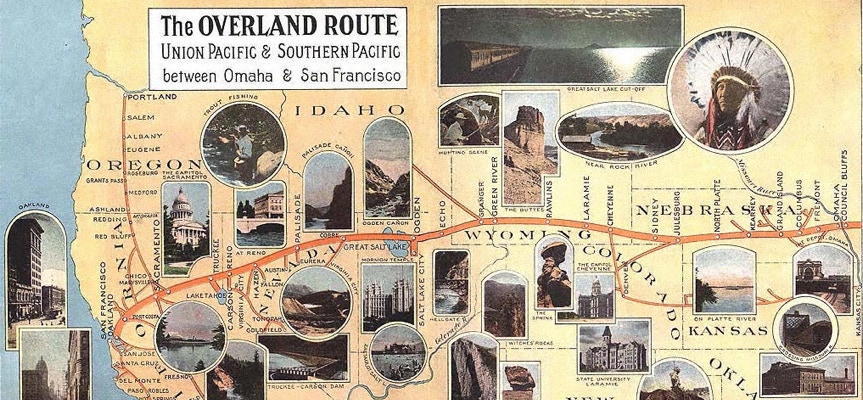
The further West one comes, the more there is to like.
Oscar Wilde
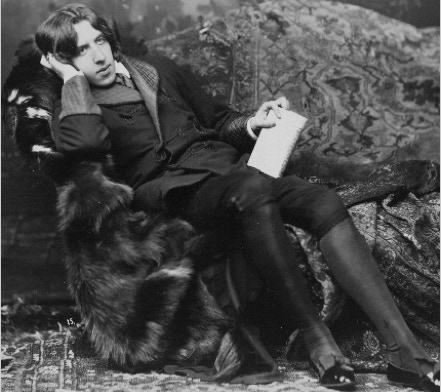
OSCAR WILDE'S JOURNEY TO CALIFORNIA
Oscar Wilde's train journey to California is a significant event in his lecture tour of America as it constituted his longest period of continuous traveling—4 days and 4 nights—incorporating some 1867 miles and over 200 station stops.
It was, as might be imagined with Oscar Wilde on board, a journey that was not without incident and experience.
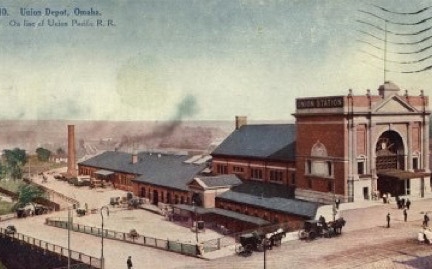
UNION PACIFIC
The Union Pacific line began at Council Bluffs, IA/ Omaha, NE (Union Depot, pictured).
Connecting trains to Omaha arrived from Boston, New York, Chicago, and St.Louis.
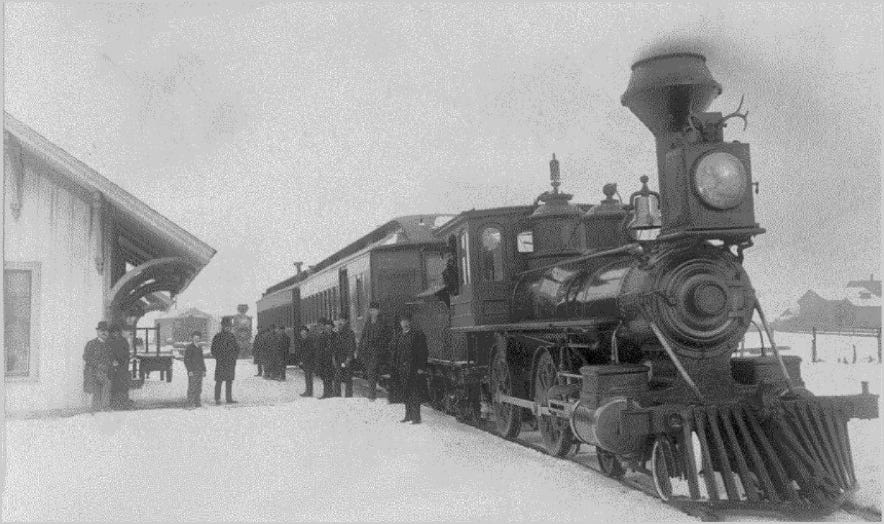
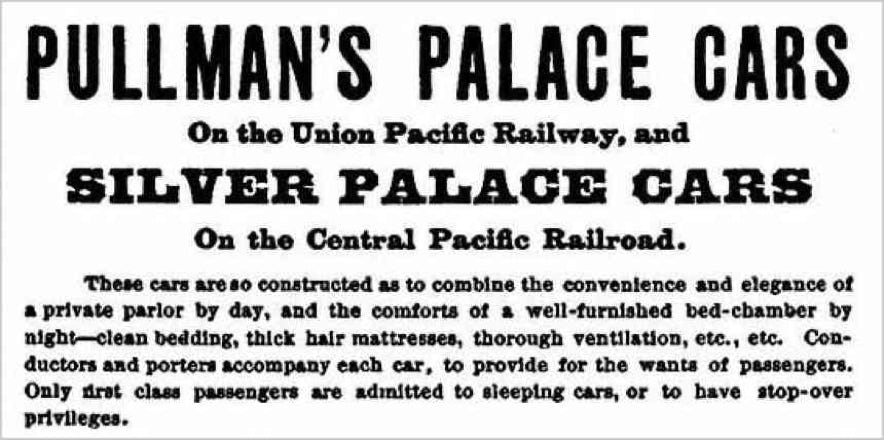
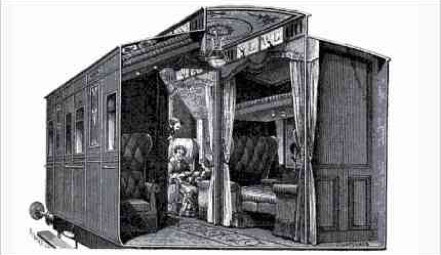
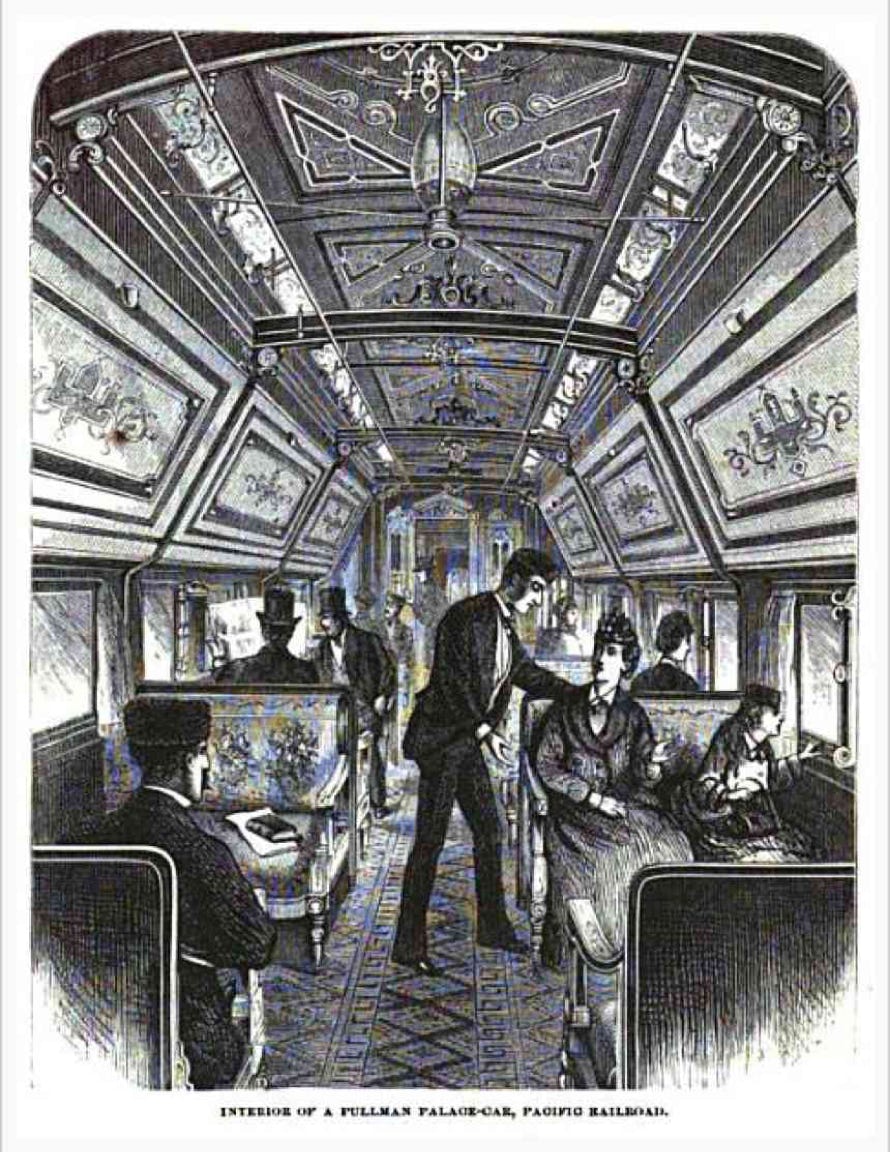
THE RAILROAD
Wilde traveled from the Midwest to California by what was known as The Overland Route — a train line operated jointly by the Union Pacific Railroad, the Central Pacific Railroad and the Southern Pacific Railroad, between Council Bluffs, IA/Omaha, NE and San Francisco, CA.
The route lay over the grade of the First Transcontinental Railroad, which first opened when the ceremonial final spike was driven by Leland Stanford connecting the Union Pacific and Central Pacific railroads on May 10. 1869.
ON BOARD
There were no dining cars on Wilde's train journey to California—inexpensive meals were offered at selected stops en route, usually at station hotels where it was also possible to purchase magazines and newspapers, or to mail letters.
Other than the passenger meal stops, Wilde did not break his journey—and he slept all four nights on the train.
He did, however, have the best of the sleeping accommodation, traveling First Class (at a cost of $100) in a one of the railroads' Palace Cars.
THE JOURNEY
Below is journey timetable of Wilde journey beginning on the Union Pacific Railroad and Connecting to the Central Pacific Railroad at Ogden, together with a selection of incidents and ephemera from various station stops on Wilde's journey to California.
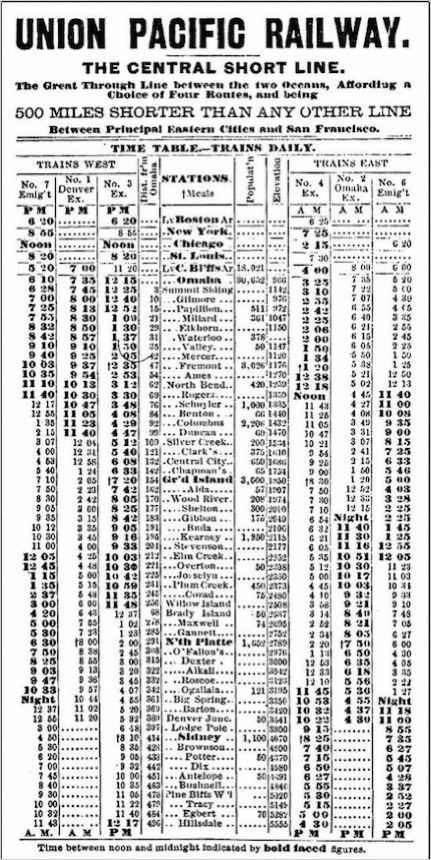
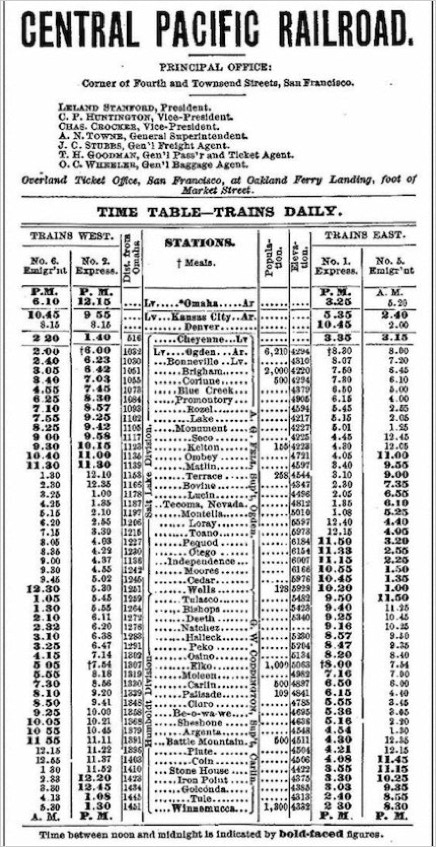
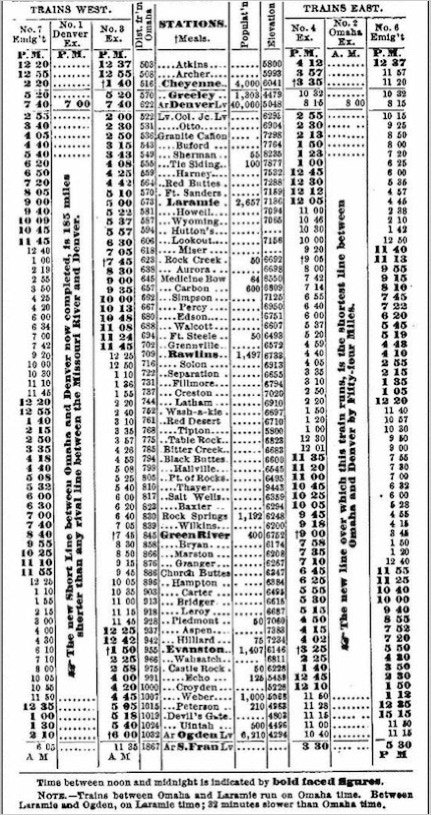
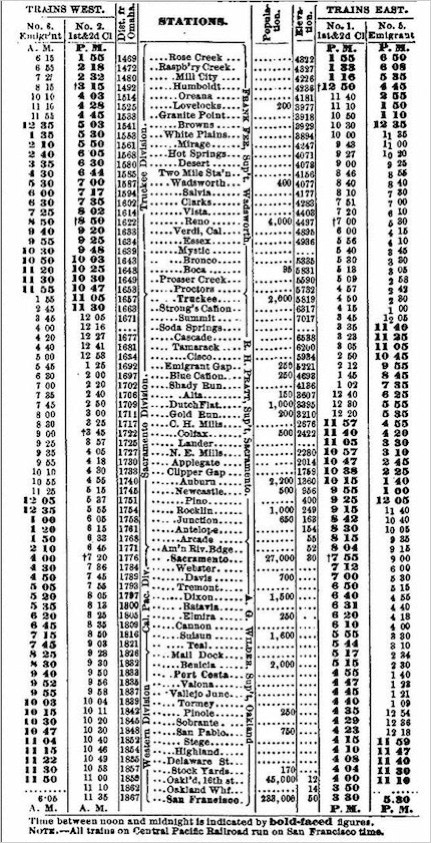
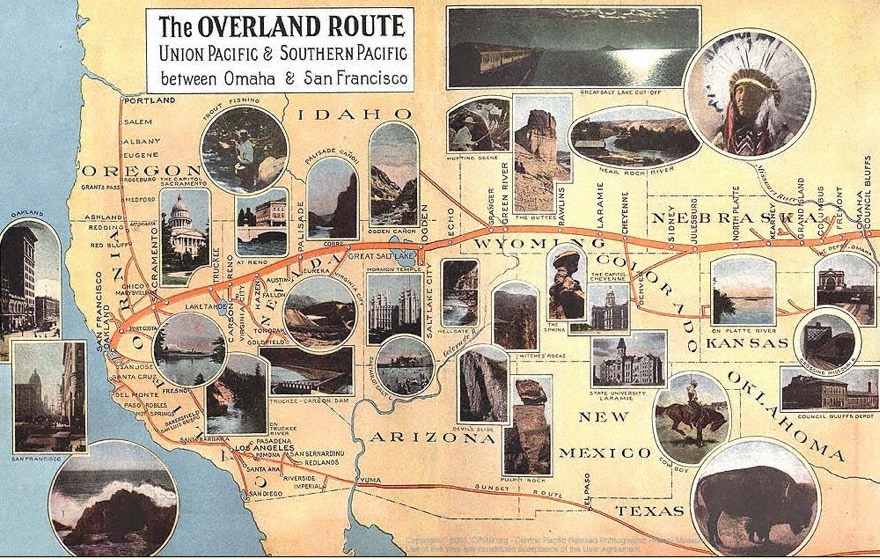

FREMONT, NE
Wilde's presence in America captured public imagination engendering a widespread curiosity. Crowds gathered along the line and at stations to see him in aesthetic dress that included his famous knee breeches. The Fremont press alluded imaginatively to Wilde's lower legs:
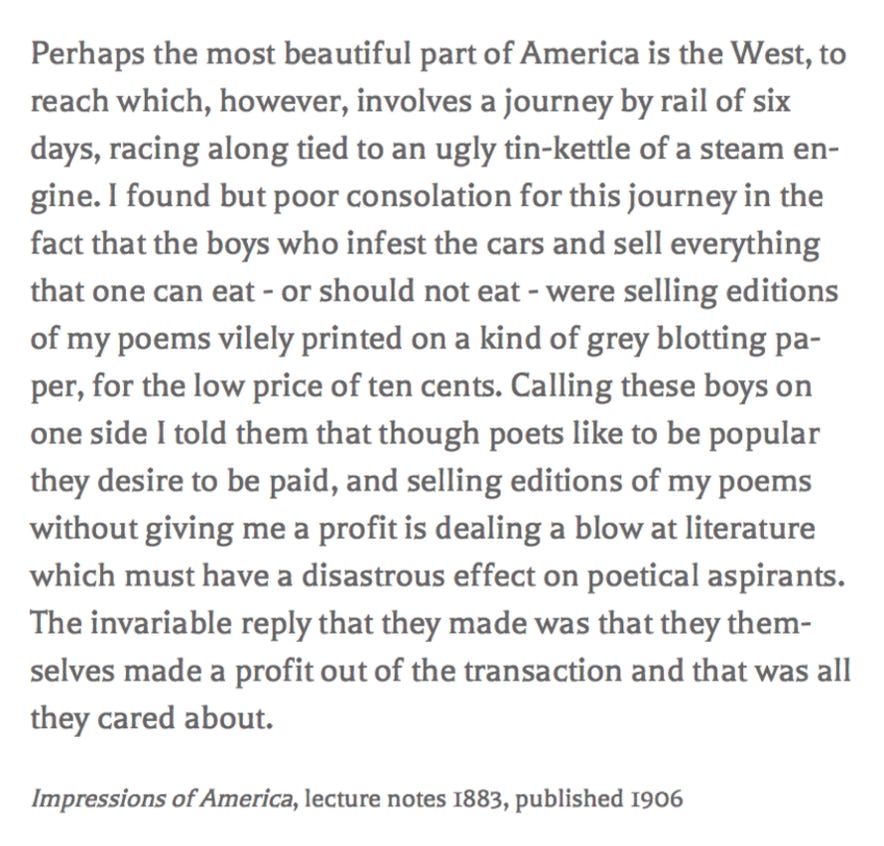
PIRATES ON BOARD
Traveling the route on the train were boys selling various goods including food and newspapers.
In his essay Impressions of America Wilde recounted the experience of being offered his own poems for sale in pirated editions.
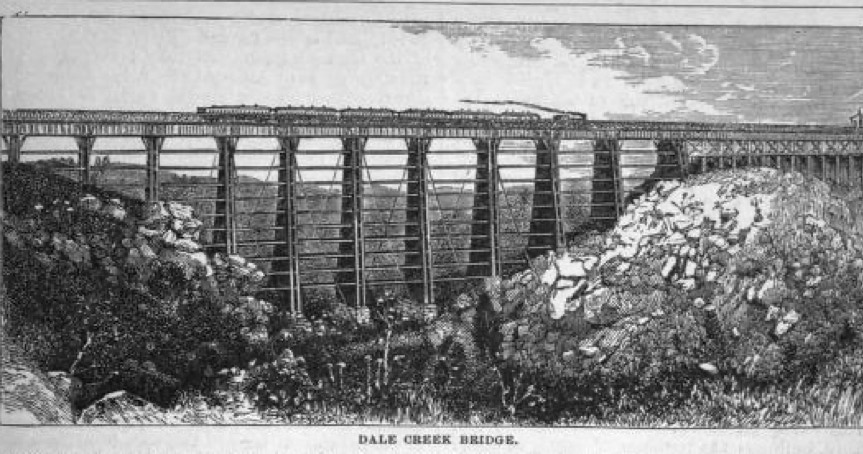
SHERMAN, WY
At 8,247 feet (2,514m) Sherman Hill near Laramie was the highest point on the transcontinental railroad.
The small town of Sherman arose north of the tracks where trains stopped to change locomotives before beginning the long descent either east towards Cheyenne or west across the 130 feet (40m) high Dale Creek Bridge to the Laramie Valley.
The stop provided a roundhouse with five stalls and a turntable, two section houses, and a windmill with water tank.
In 1882, Sherman had a population of 55, and although the town grew to several hundred, it is now deserted and no structures are extant except for the nearby Ames Monument, a large pyramid designed by noted American architect H. H. Richardson, built to mark the highpoint of the line, and as a lasting tribute to the Ames brothers, financiers to the Union Pacific Railroad.
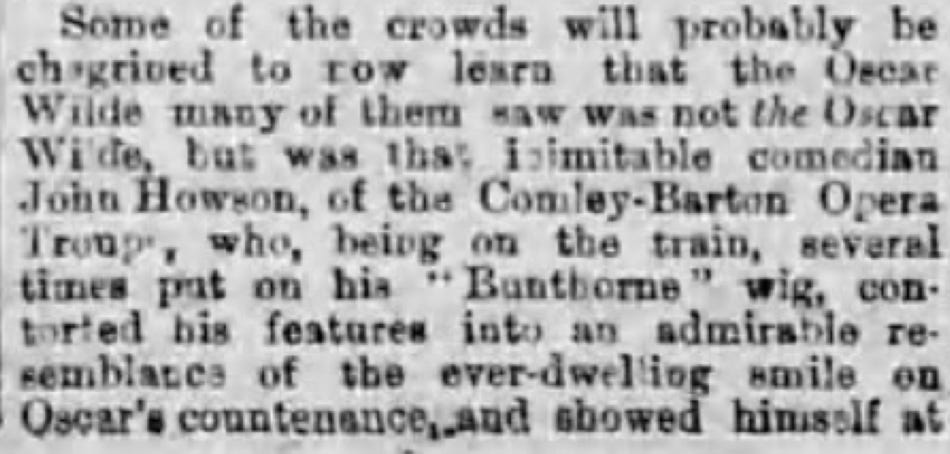
The Record-Union (Sacramento, California) March, 27 1882, 3
IMPOSTOR ON BOARD
John Howson, the actor who was playing the part of the Wildean character Bunthorne in Patience, was a traveling companion of Wilde's on the train, and he occasionally fooled onlookers with his imitation.
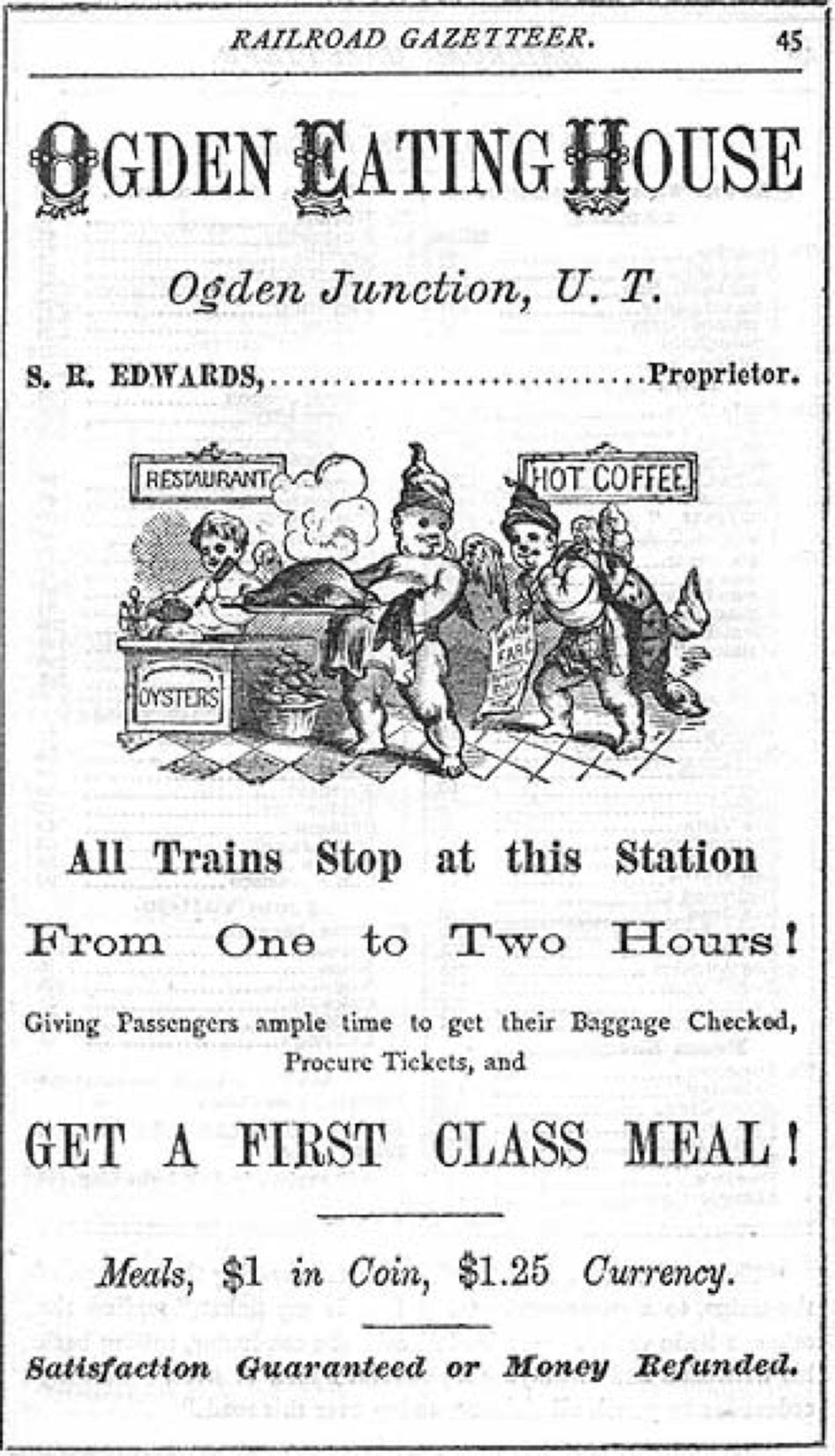
OGDEN, UT
Wilde arrived at Ogden on the evening of March 24, 1882, and was informed of the death that day of the American poet Longfellow, with whom he had breakfasted when in Boston, two months earlier.
The Mormon town of Ogden, UT was a railroad hub and was terminal point and junction of the Union Pacific and Central Pacific Railroads when Wilde traveled West.
Ogden had effectively become the meeting point of the two lines when Union Station was built in 1869, taking over from Promontory Station nearby where the Golden Spike was driven.
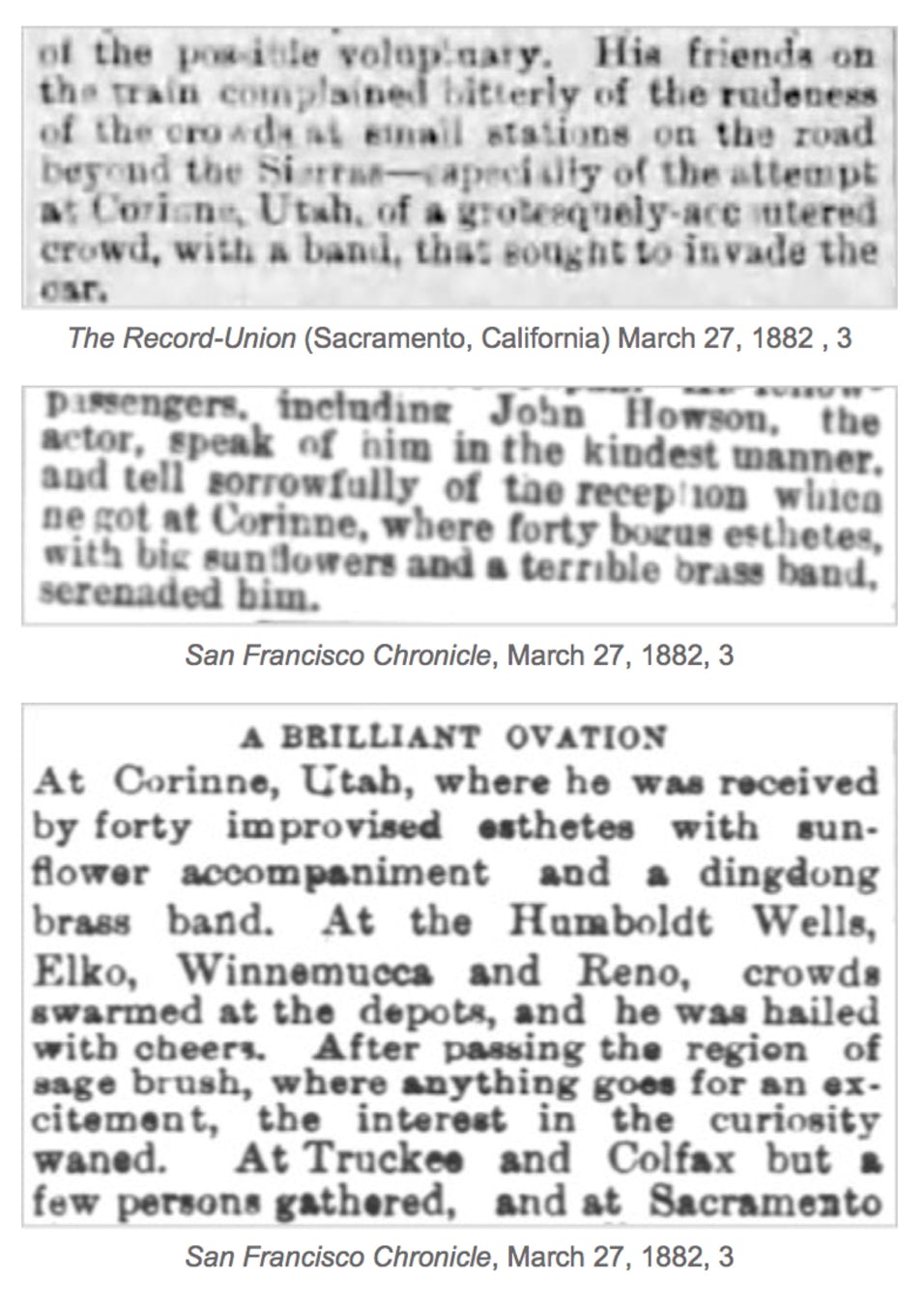
CORINNE, UT
At Corinne a band of Wilde imitators 'grotesquely accoutered' assembled on the platform and sought to invade Wilde’s car.
Wilde said when he returned to New York in May that satire is the homage which mediocrity pays to genius, so he would have considered 'forty bogus aesthetes' in a town of 500 to be quite a tribute.
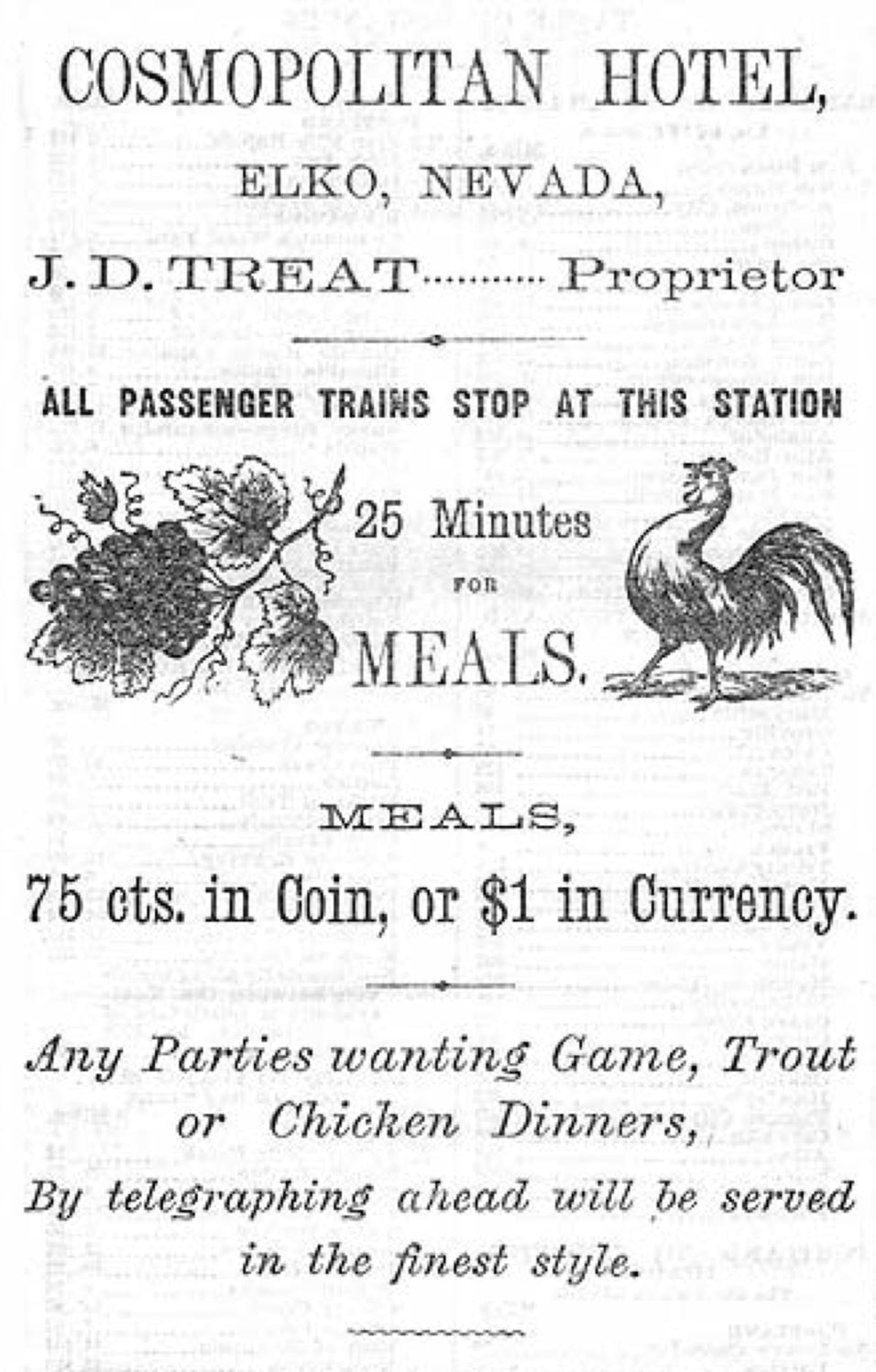
ELKO, NV
Meal stops were frequent along the route, and are indicated by the cross symbol next to the train time on the left of the station name in the timetable above,
One such meal stop was here at Elko, NV.
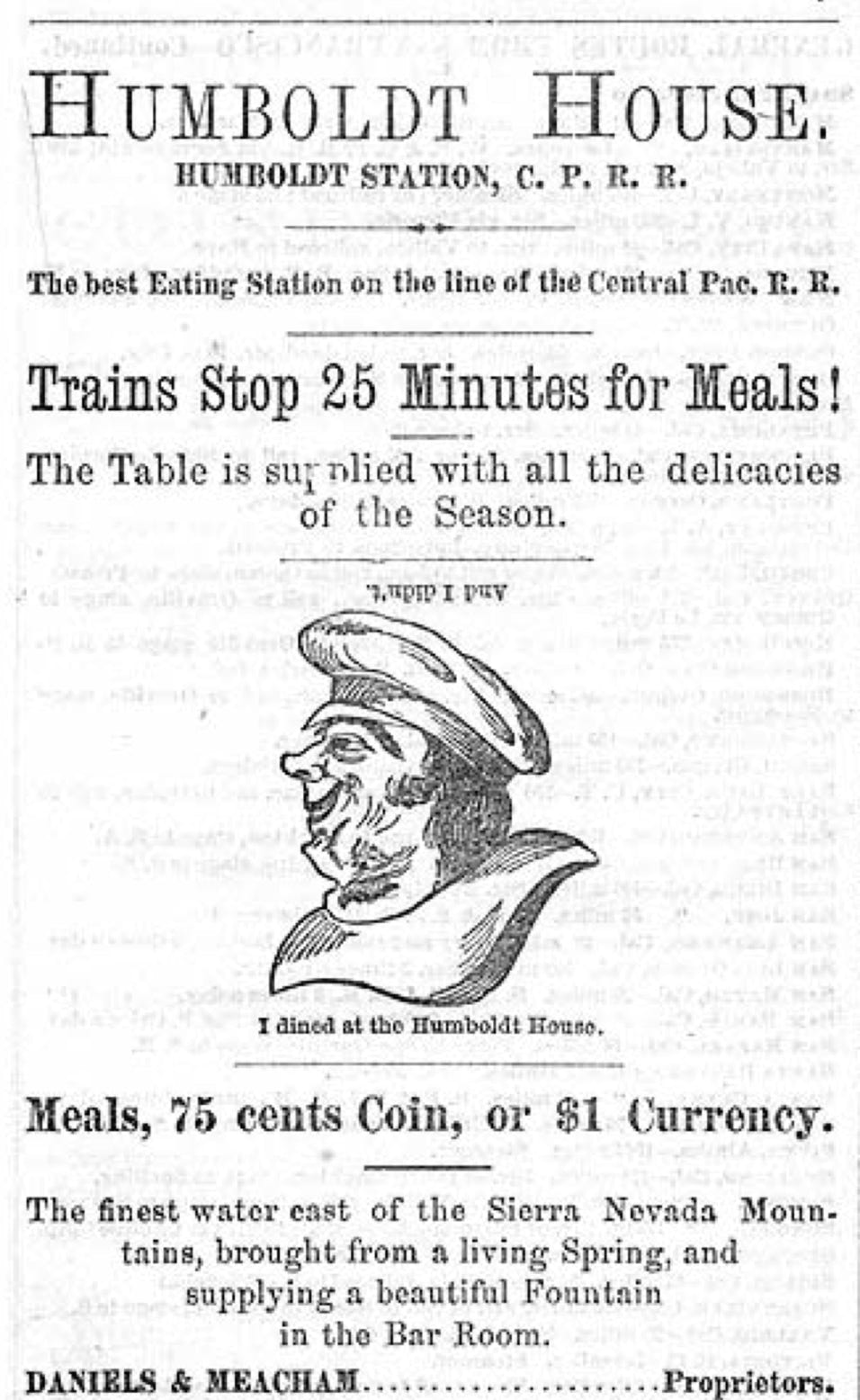
HUMBOLDT, NV
Humboldt House, where mountain spring water supplied a fountain in the bar room.
Its advertisement featured a creative illustration of chef character who could be viewed upside down.
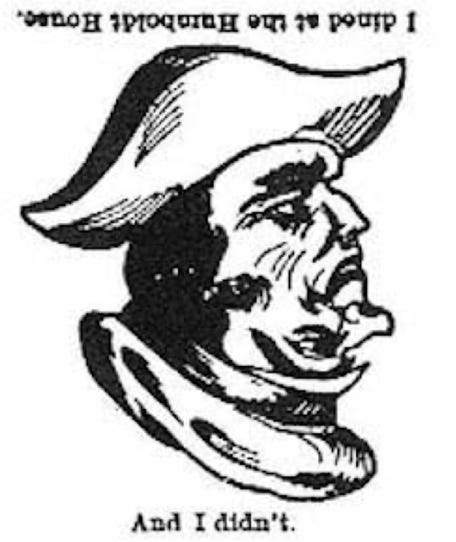
RENO, NV
Reno was one of several places where Wilde was given flowers. In San Francisco his traveling manager sought to arrange them to make Oscar's arrival appropriately aesthetic. The Reno papers reported that the gift from there was put to good use.
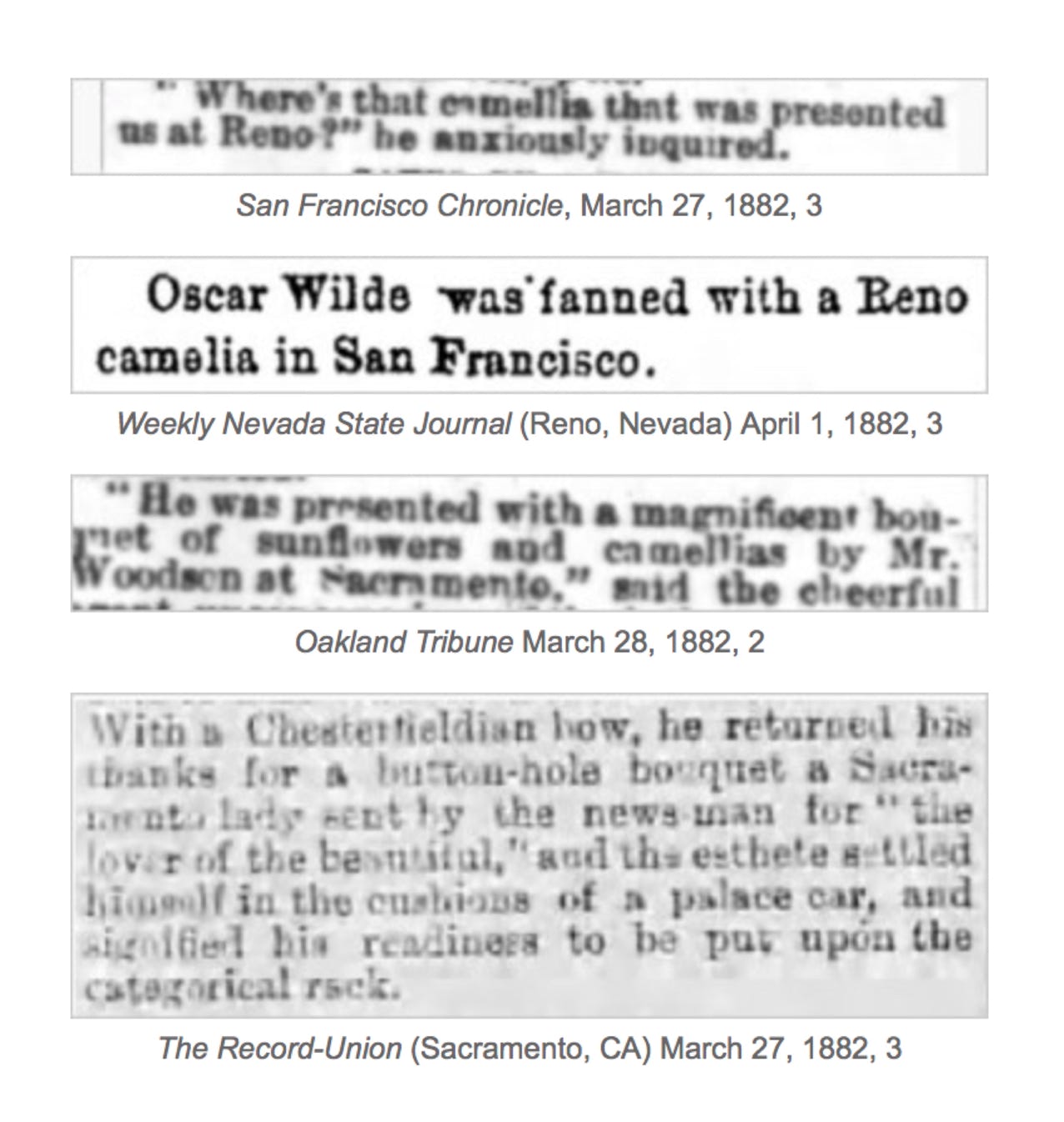
YOSEMITE VALLEY
The western Sierra Nevada impressed Wilde almost as much as his favorite New York restaurant. He wrote later:
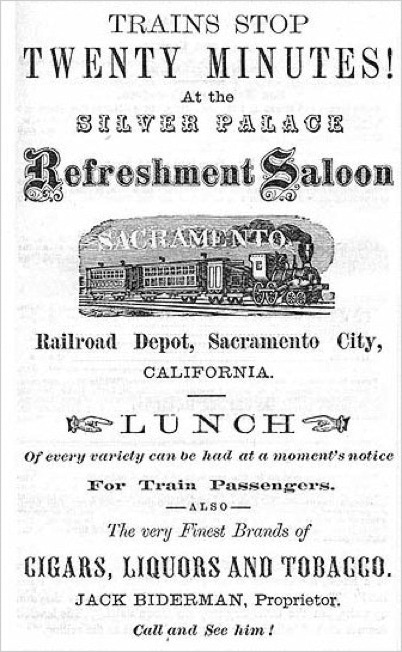
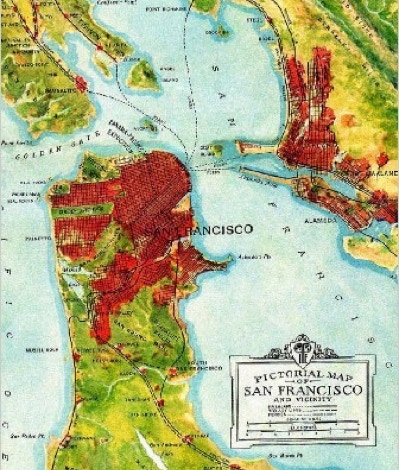
SACRAMENTO TO SAN FRANCISCO
After making another floral presentation at Sacramento, a reporter from the Record Union joined Wilde for breakfast, and an interview which continued on the final leg of the journey.
The train terminated at Oakland—the 1873 terminus on 7th Street, just before lunch time on Sunday, March 26, 1882.
From Oakland, Wilde was taken by carriage to the wharf for the ferry-boat crossing to San Francisco. He was accompanied by many members of the press and a reception committee which had ferried over to Oakland by the 8:00 AM ferry that morning to meet him.
Oakland and San Francisco, separated by the San Francisco Bay. Connecting the bay to the ocean is the Golden Gate—a strait not yet spanned by the now famous bridge (opened 1937).
In 1882 the only method of traversing the land masses was by ferry-boat.
In San Francisco Wilde was whisked away to The Palace Hotel, the largest and one of the most luxurious hotels in the world, which was to be his base for the duration of his California stay.
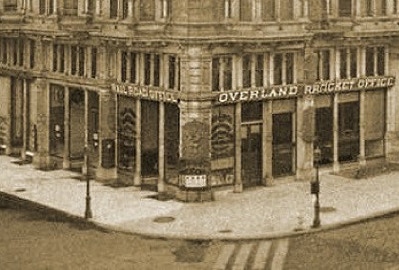
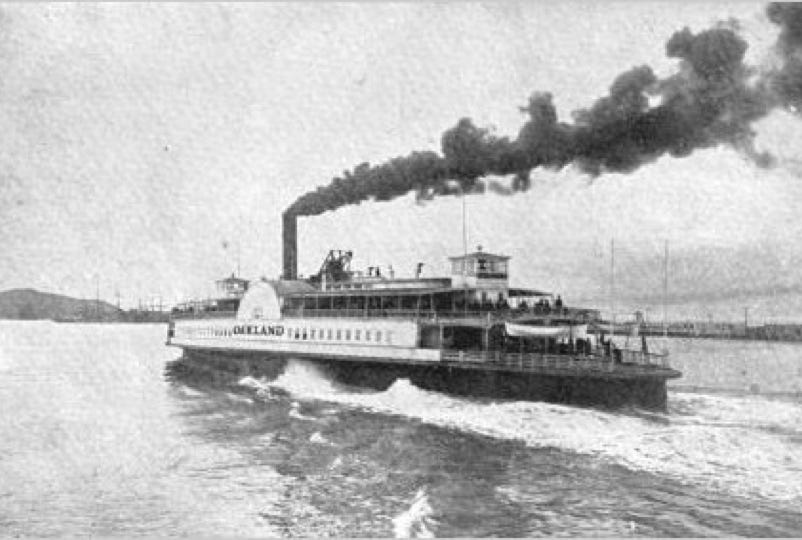
The Overland Railroad office in the Palace Hotel
The Oakland Ferry Boat
WILDE'S IMPRESSIONS OF FOUR DAYS IN THE TRAIN
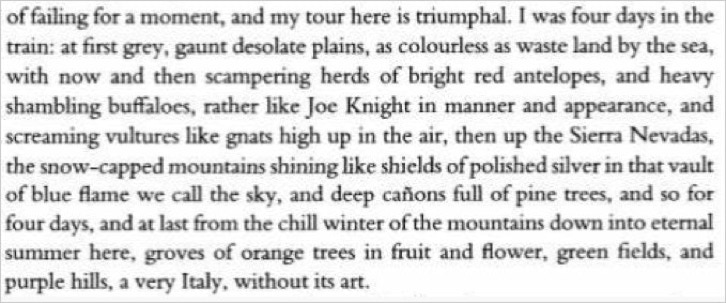
Letter from Wilde to Norman Forbes-Robertson, March 27, 1882 (excerpt), Complete Letters , 158-9
2] Joe Knight: Joseph Knight (1829-1907) was an English drama critic.
[3] Vault of blue flame we call the sky:
Compare Wilde's lines from The Ballad of Reading Gaol:
I never saw a man who looked
With such a wistful eye
Upon that little tent of blue
Which prisoners call the sky,
And at every drifting cloud that went
With sails of silver by.
Credits:
The 1882 Central Pacific and Union Pacific Railroad Timetables and other railroad ephemera on this page are taken from the Bruce C. Cooper Collection, online at Central Pacific Railroad Photographic History Museum (cprr.org) and used in accordance with this web site's fair use policy of public domain material.